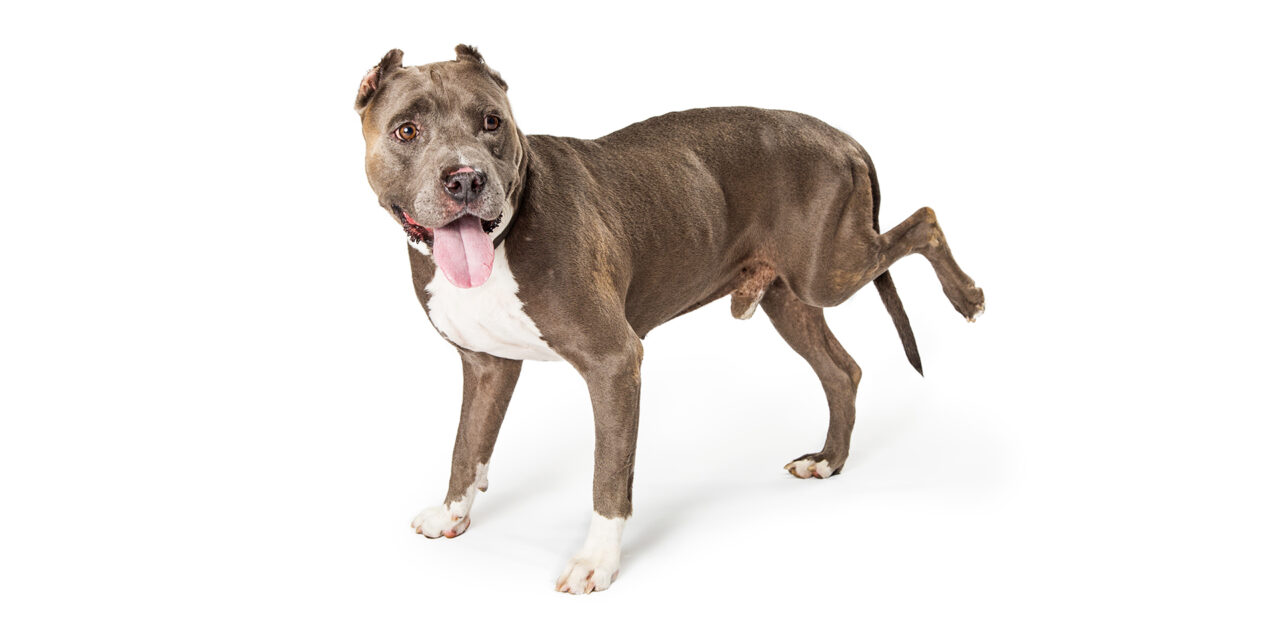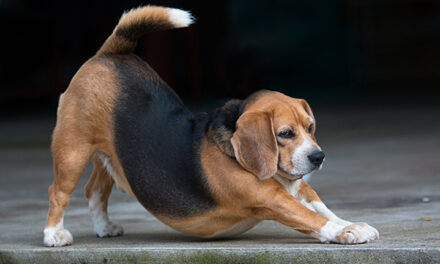Let’s talk about rear leg lameness. Most commonly, it’s the ligaments that allow the knee to bend like a hinge that are at risk for injury with active dogs. So, it’s not likely your couch potato pooch has much to worry about. Although, like humans, being overweight places a burden on all joints. As we know, it’s not the family dog raiding the refrigerator. Guilty as charged.
With athletes, an ACL (Anterior Cruciate Ligament) tear is usually an acute knee trauma that happens suddenly after a jump or sudden change of direction. Hello football. Not so in the family dog. When a dog partially tears its CCL (Cranial Crucial Ligament) the limp gets worse little by little, over time. When this unexplained limp becomes a full tear, due to continued physical activity (especially running and jumping), it’s the last straw. In fact, it’s so painful that dogs often shift their body weight onto the opposite leg, leading veterinarians to coin the term “three leg lameness.” Over time, shifting weight onto the opposite leg can later lead to injury of that knee. So, down the road, that strain can cripple both rear legs. The double whammy.
If your dog begins to favor a hind limb, don’t assume the problem will go away on its own. Only your veterinarian can determine if the limp is the result of a knee joint gone bad. The diagnosis is commonly made by special palpation. On further examination, radiographs should include views of the stifle (knee) and hip joints. Older dogs and dogs with joint injuries are prime suspects to develop osteoarthritis.
Most veterinarians recommend surgery as soon as they diagnose a ligament injury. That’s because surgery is their most familiar option. However, before reaching for the knife, other factors need to be considered. What is the dog’s age, medical history, activity level, and realistic down time for rehabilitation? Unfavorable factors may lead pet owners to look for other options. Then, there is the sticker shock – $5,000 or more. If you decide to move forward, demand a referral to an orthopedic surgeon no matter how much you love your vet! Expect better results with the credentials of a board-certified surgeon.
In recent years, well-designed custom-fitted knee braces have been used to help dogs recover from torn cranial cruciate ligaments. Properly used, these braces support the joint while scar tissue builds stability. Custom braces are designed to precisely fit individual legs. Measurements for casting can be done by a willing veterinary hospital or at home by the DIY person in your life. Casting materials and video instructions are provided by the brace manufacturer. And, if surgery is a go, wearing the brace post-op will aid in recovery. Another popular approach which does not require casting is the Posh Dog Knee Brace.
After a break-in period, your dog will wear the brace during waking hours. As we all know, that knock at the door or ringy ding doorbell will spring your convalescing pooch into action. Sudden uncontrollable actions can delay recovery times. Not to mention, it’s against doctor’s orders! That’s why most pet owners put the brace on in the morning and take it off in the evening before bed.
Some braces are waterproof, allowing dogs to exercise on underwater treadmills or swim while wearing their brace. This would be an important consideration for me, personally, since water carries the weight, taking stress off the joints. Other supportive measures to encourage healing include laser and pulsed electromagnetic field (PEMF) therapy.
Be prepared to roll up your sleeves and do your homework. Success will depend on your dedicated efforts. Not every dog is a good match for bracing, and neither is every owner.






